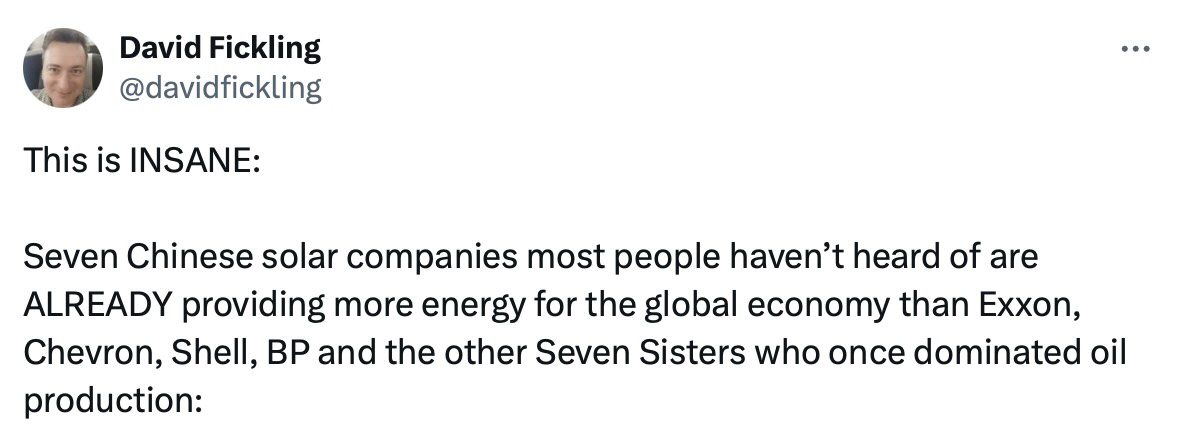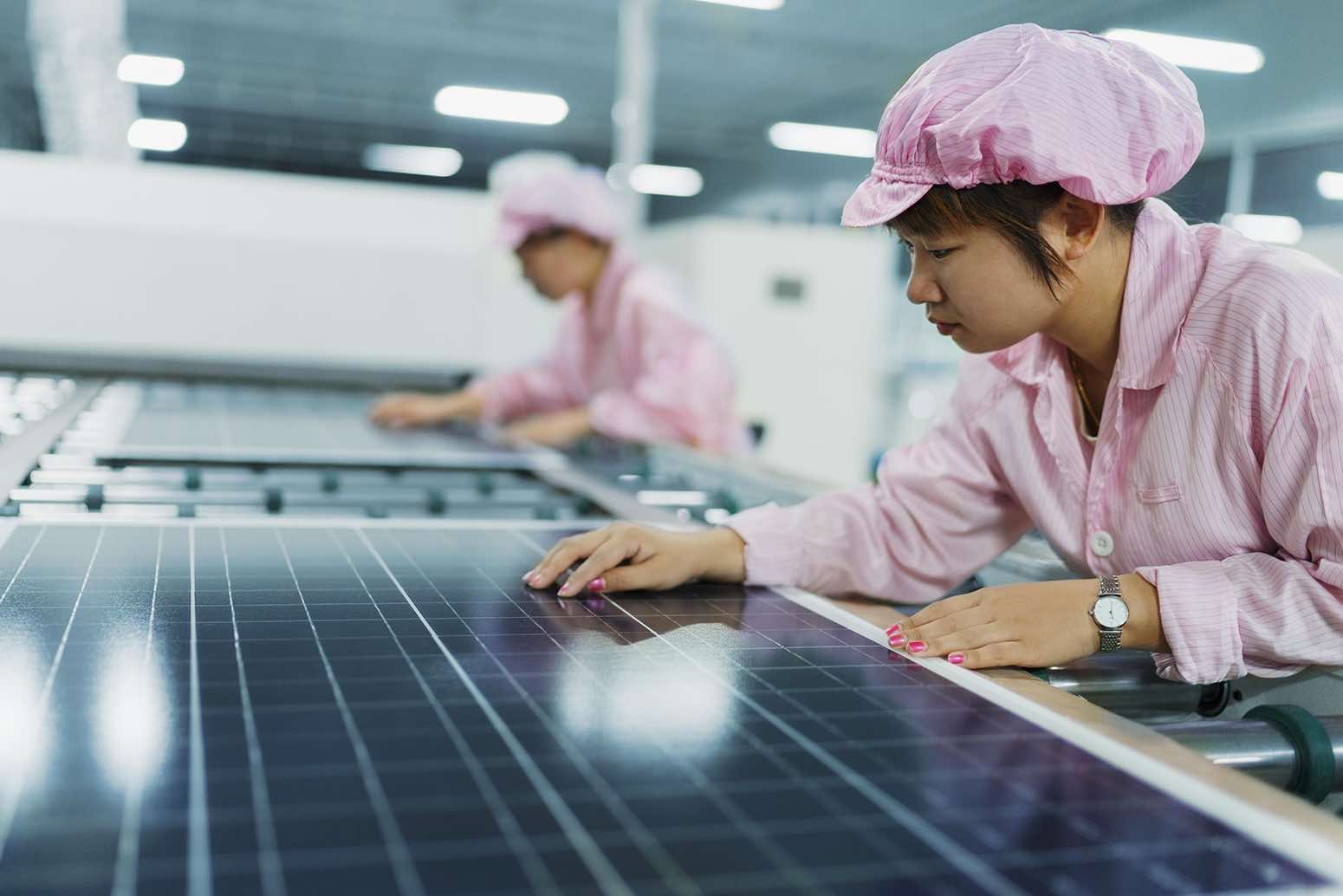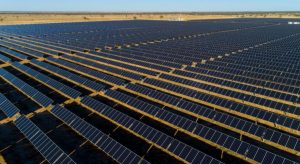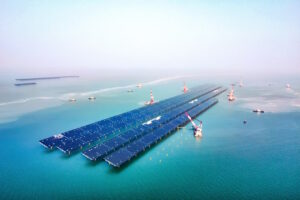Critics of renewable energy often complain that the amount of energy produced by wind and solar remains a fraction of that produced by fossil fuels. What they don’t admit is that most of the energy produced by coal, oil and gas is useless and disappears as waste heat, adding yet more to global warming issues.
A remarkable new milestone has been flagged by a Bloomberg NEF analyst, David Fickling, who says that seven Chinese solar companies are already providing more “useful” energy for the global economy than Exxon, Chevron, Shell, BP and the other members of the “seven sisters” that once dominated oil production.
Useful energy is the actual energy that makes it to your light socket or makes a car move, as opposed to the ‘primary’ energy stored created by the burning of fossil fuels.
Vehicle engines only use about a fifth of the energy put into them to move. The rest is lost through vibrations and heat. Gas turbines are more efficient, turning roughly a third of their fuel into useful energy.
Fickling estimates that only a quarter of energy from extracted oil and gas is turned into useful energy. And because of those inefficiencies in the way combustion engines use fossil fuels, oil and gas companies must effectively extract four times what solar panel manufacturers have to make in order to deliver less useful energy.
It’s an analysis that shines a harsh light on the amount of money Australia, and other nations, are wasting on fossil fuels when an alternative is available.
Crunching numbers from the Australian Petroleum Statistics shows that in the 12 months to the end of April this year, Australia spent $59 billion on imported liquid fields, from crude oil to diesel to airline fuel and LPG.
If 75 per cent of this is wasted as useless heat and vibrations, Australians squandered $44 billion on fossil fuel energy that was never used.
In 2020-21 the federal government raised $18.8 billion in fuel excise taxes – which means consumers and companies paid some $14.1 billion for fuel they could never use.
It’s a situation that creates a perverse incentive for governments to continue to raise revenue on a substance that is largely wasted, and for miners and farmers, the main recipients of fuel tax subsidies – which will hit $14.5 billion this year – to continue to invest in that waste.
Fickling’s rough estimates suggest the new guard leapfrogged them long ago.

“In the long term, the energy that solar companies are providing each year is well above what’s available in Big Oil’s geological reserves,” he writes in an analysis comparing the two.
He says the new dominant global energy producers are Tongwei, GCL Technology, Xinte Energy, Longi Green Energy Technology, Trina Solar, JA Solar Technology, and Jinko Solar.
The old? Exxon Mobil, Chevron, Shell, BP, TotalEnergies, ConocoPhillips and Eni.
He compared the exajoule output of the seven biggest oil companies in the world to the new guard of polysilicon and solar panel manufacturers.
On a basic like-for-like comparison of exajoules produced, the solar companies aren’t far behind the oil businesses.
But a deeper dive began to show just how far the oil majors are slipping behind.
An oil or gas reserve can continue to produce for many years but a factory can do the same until equipment dies; furthermore oil or gas is a single-use product versus solar panels that can work for up to 25 years.
Polysilicon and panel maker Tongwei tops the list, with an estimated production capacity of 27 exajoules (EJ) of energy a year. It was followed by the other six Chinese solar companies, with JA Solar producing the least at 11 EJ.
The largest oil producer is Exxon, and its reserves are estimated to deliver 6 EJ annually of useful energy, when factoring in development costs to keep fields delivering.
To put exajoule use in context, Australia used 5.7 EJ of energy in 2021-22, according to the Department of Climate Change, Energy and Environment.










